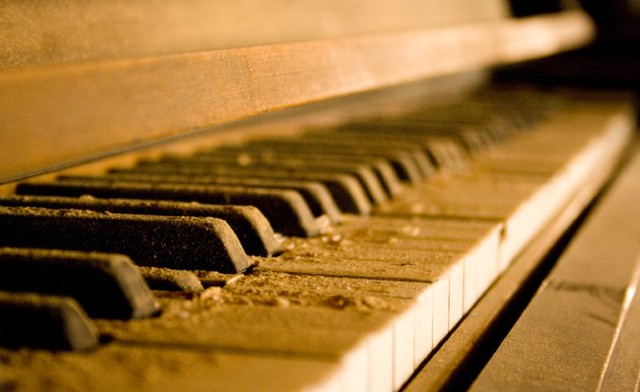 |
| Photo by ercwttmn |
Keyed instruments that resembled some sort of a keyboard first appeared in the middle of the 12th Century. It was called the monochord. Eventually, enough keyed strings developed into the clavichord. This instrument was unique, in that having keyed strings better facilitated the ability to strike more than one string at a time. This meant that it was possible to produce two sounds, or notes, at once. It until a couple of centuries later, in the 14th Century, that metal wires was used in place of strings for many instruments, including the keyboard instruments.
The harpsichord came into being before the piano did (sometime in the 14th Century). It was based more on the old instrument called the psaltery. A psaltery was a simple instrument where the strings were placed in a box and then plucked with the finger, or with an instrument called plectra. When the keys of a harpsichord were struck, plectra pulled on the sting, plucking it. However, the harpsichord was incapable of creating changes in volume.
It is unclear exactly when a truly hammered keyboard instrument appeared. There are letters indicating that an instrument that could play both loud and soft was available in 1598, but historians are unsure as to whether this was a hammered piano or a cleverly rigged harpsichord. In any case, most historians agree that what can actually be called the "pianoforte" did not make an appearance until 1709. This instrument was capable of a wide range of artistic expression.
The name piano is a derivative of the term pianoforte. "Piano" is a term that means "soft," and "forte" is one that means "loud" or "strong." The name given the piano originally is quite descriptive. It basically means "soft-loud" and describes the feat of being able to play a keyboard instrument with varying degrees of volume. Originally, there was little interest in the pianoforte. However, as an article written about the new keyboard invention was translated into different languages made its way across the European continent, makers of clavichords and harpsichords began also to make pianos.
As the piano evolved, it began to take different forms, including upright grand (1739), upright (1800), and different styles of grands and uprights, including those that expanded to include more octaves. While the keyboard arrangement has not changed much since the 14th Century, keyboard instruments have expanded to include more than one sounding board and several octaves.

No comments:
Post a Comment